Home Security Systems: Your Options for 2024
What we've learned from more than 1,000 hours of research...

SafeHome.org may receive compensation from some providers listed on this page. Learn More
We may receive compensation from some providers listed on this page. Learn More
What we've learned from more than 1,000 hours of research...


Your home is undoubtedly one of the most important places or spaces in your life. It’s where you sleep at night. It’s where you create memories with your family. It’s where you should feel most safe and secure.
Unfortunately, the sanctity of this safety is violated with frightening frequency. According to the FBI, approximately 2.5 million homes are burglarized every year.1 That doesn’t mean you have to sit back and wait to be a victim, though. There are proactive measures you can take to protect your family and your property.
For many people, that means installing a home security system. There’s really no better way to prevent burglars and thieves from snooping around where they shouldn’t, and you can’t beat the peace of mind that comes from knowing you can summon help in seconds (or at least minutes) during an emergency situation.
That said, selecting which security system is right for you can be a little daunting. And we get why. You might have questions about installation: do you need to have someone out to install it, or are you handy enough to do it yourself? Questions about features: what’s better, battery-powered or hardwired cameras? And don’t forget questions about money: how much does it all cost? It can be tricky to know where to start.
Don’t worry. We’re here to help.
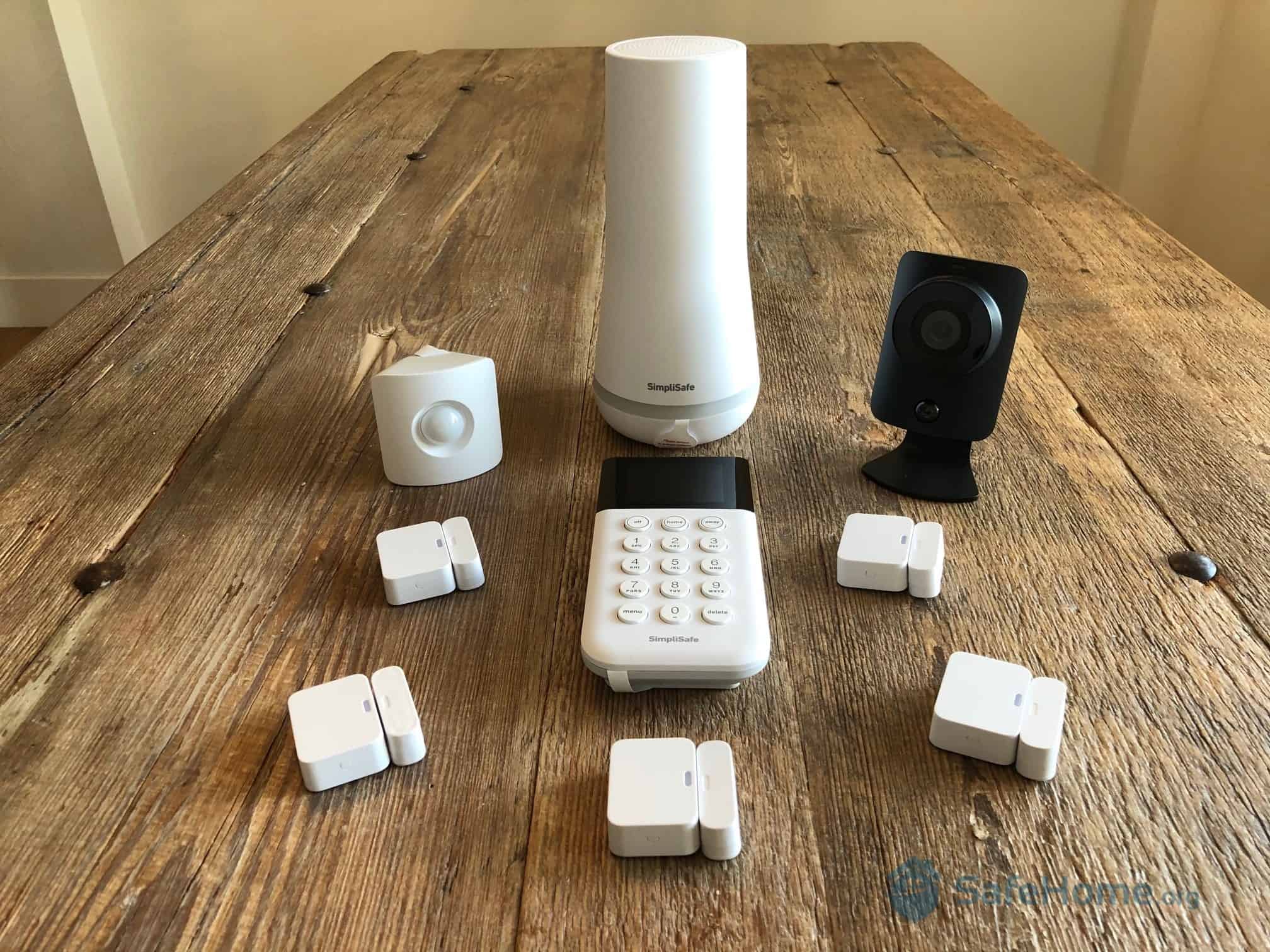
SimpliSafe Equipment
To say that shopping for a home security system can be daunting is a profound understatement. There is a lot to consider, but don’t worry — we’ve spent countless hours testing security systems in our home. After reading this guide you’ll be up to speed on everything you need to know about home security, and it will hopefully make your purchasing decisions a lot more clear.
This guide covers absolutely everything you need to know about home security systems. We get into features and accessories, costs and contracts, and even touch on a few factors you might never have considered. But let’s not keep beating around the bush. Let’s get to it.


Let’s start with the basics: just what is a home security system. Probably the best definition of a home security system is a network of connected sensors and other equipment that work cooperatively to protect your home. All of these devices are designed to let you know when there’s a problem – a fire, a flood, a break-in – so you can contact emergency personnel.
Another way of defining a home security system is to talk about its various components. There are a lot of choices.
In fact, probably the best way to understand home security systems is to focus on each one of these pieces of equipment in turn, so you get an idea of how a system can protect you.
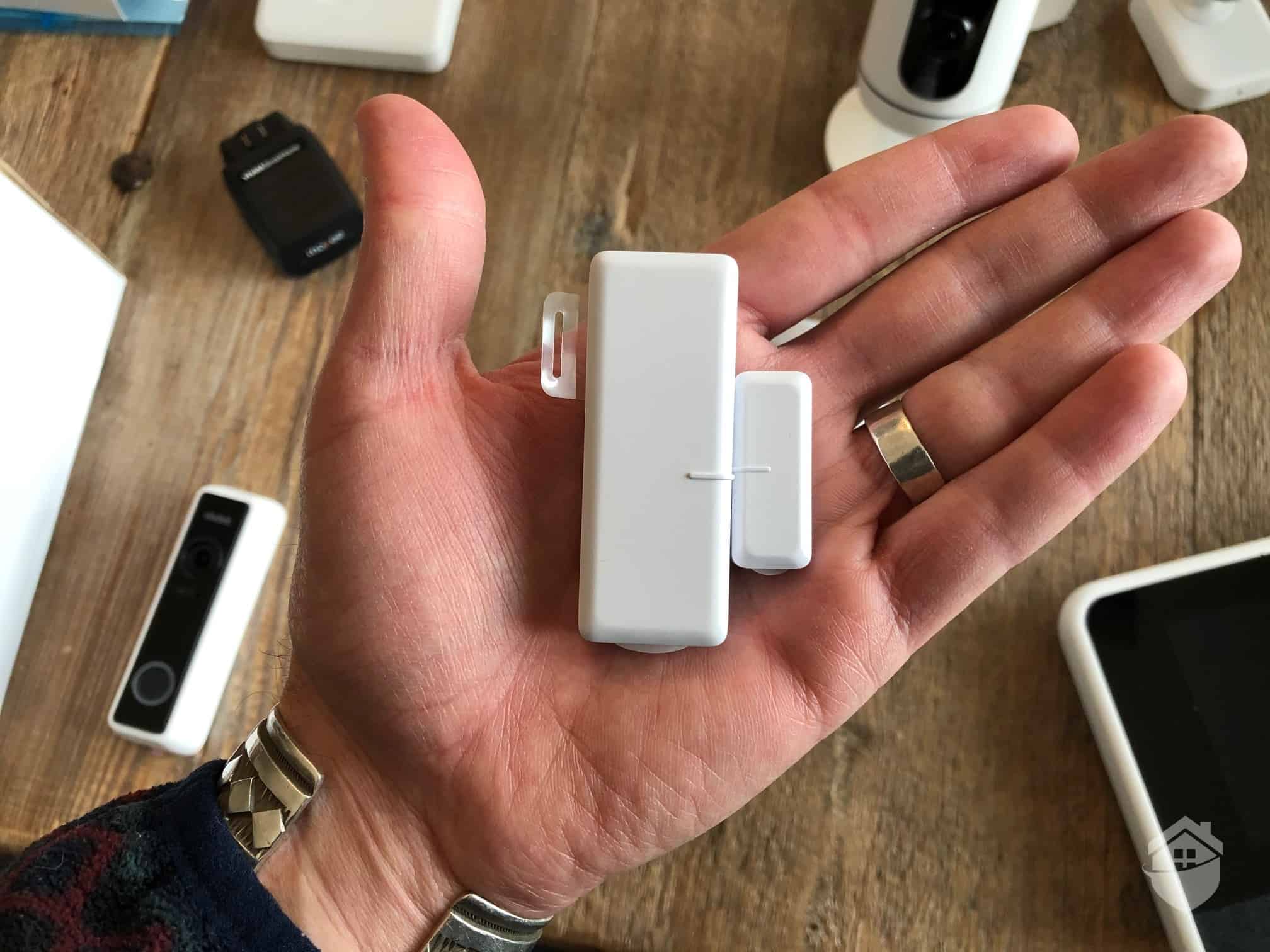
Vivint Door and Window Sensor
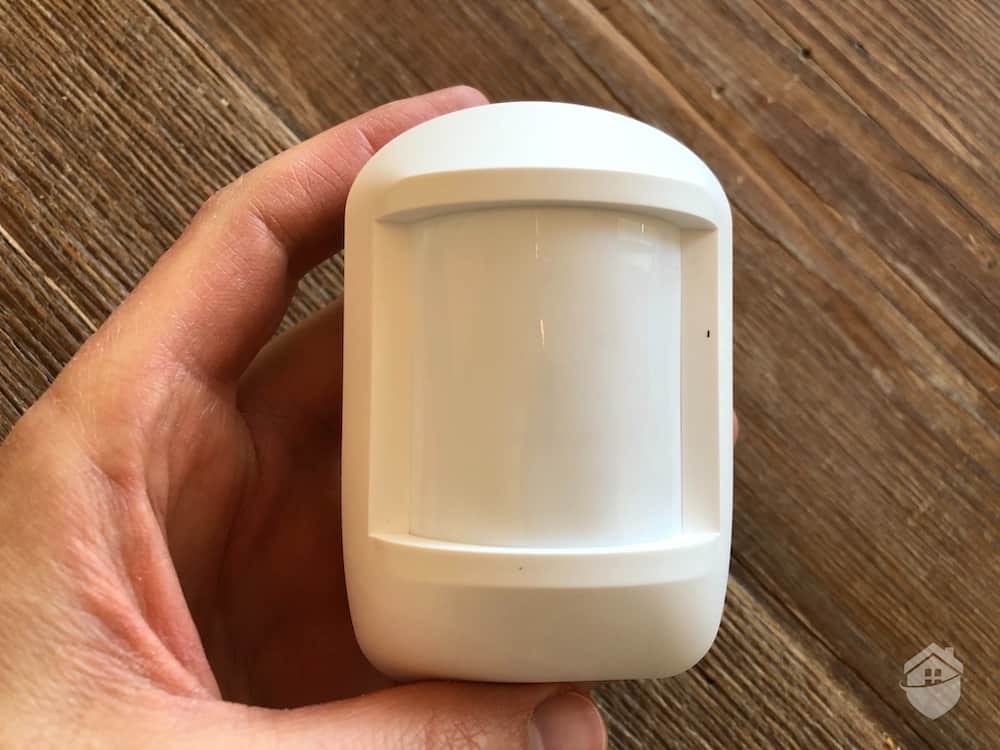
Cove Motion Detector
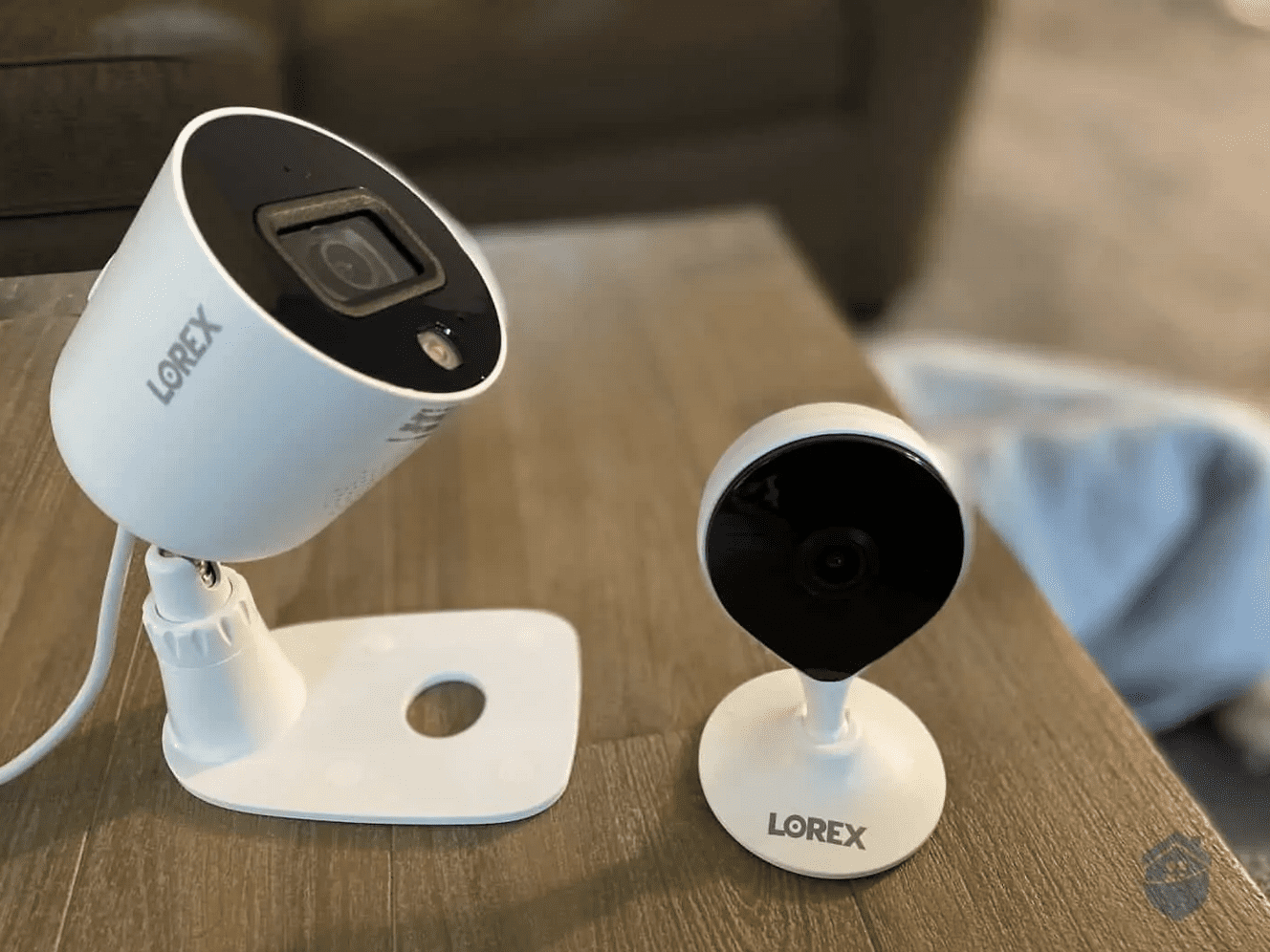
Lorex cameras
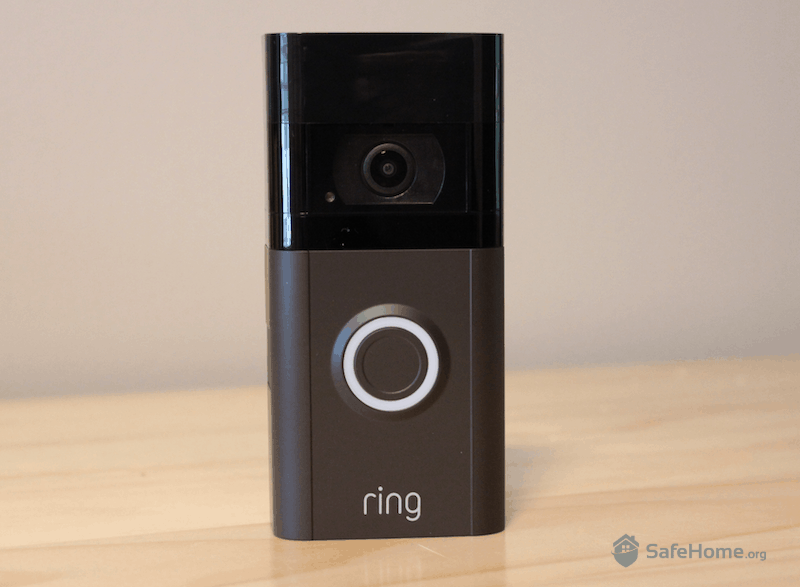
Ring Video Doorbell 3
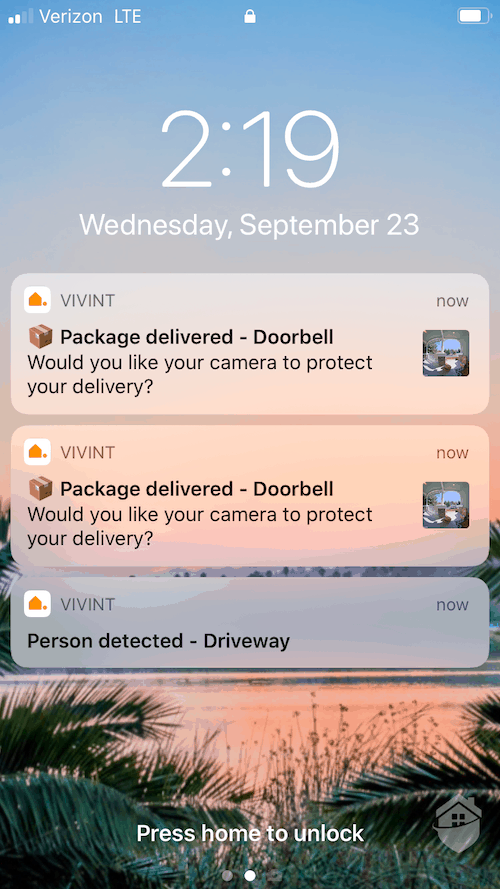
Vivint App Package Notification
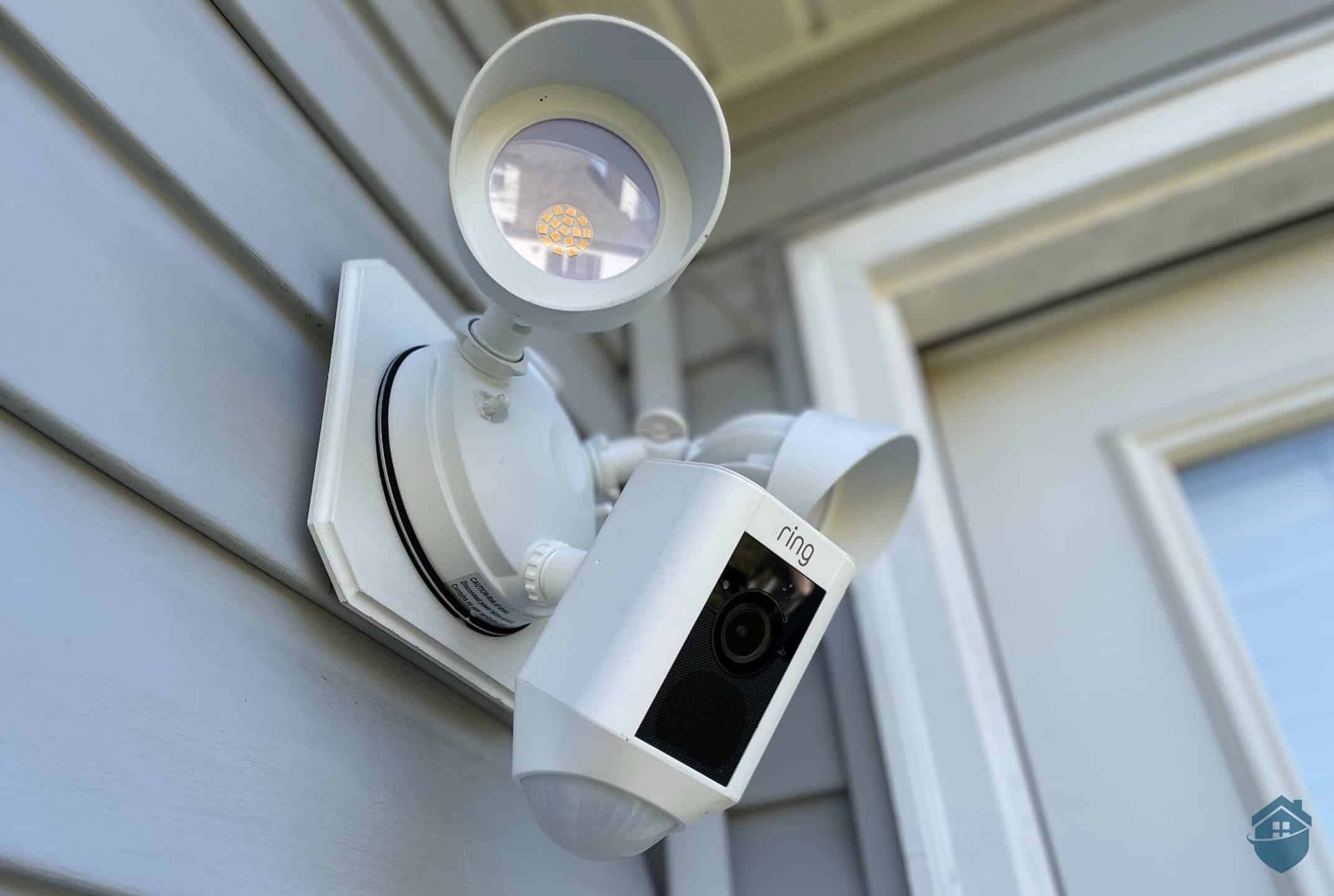
Ring Floodlight
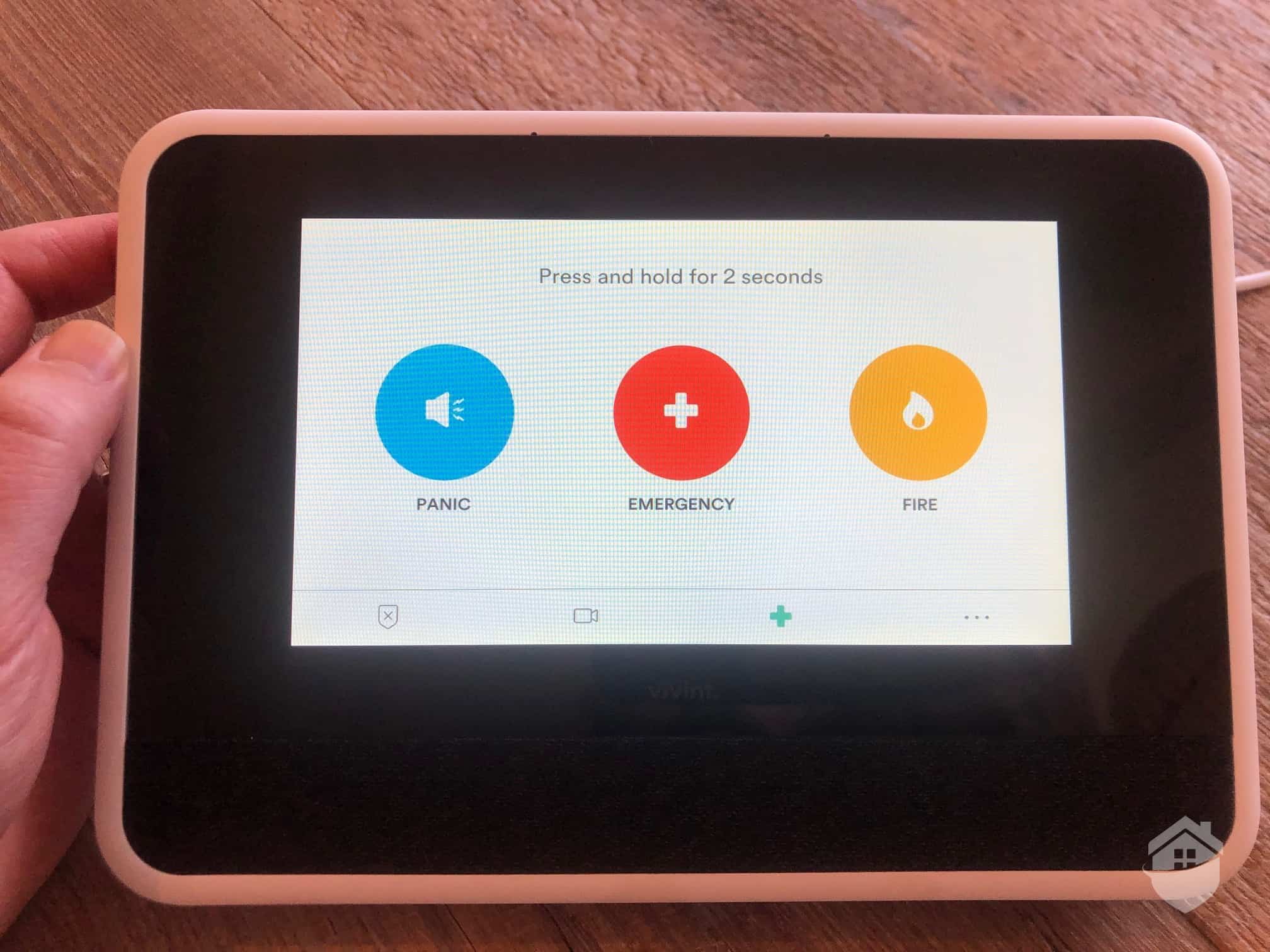
Vivint Smart Hub Settings
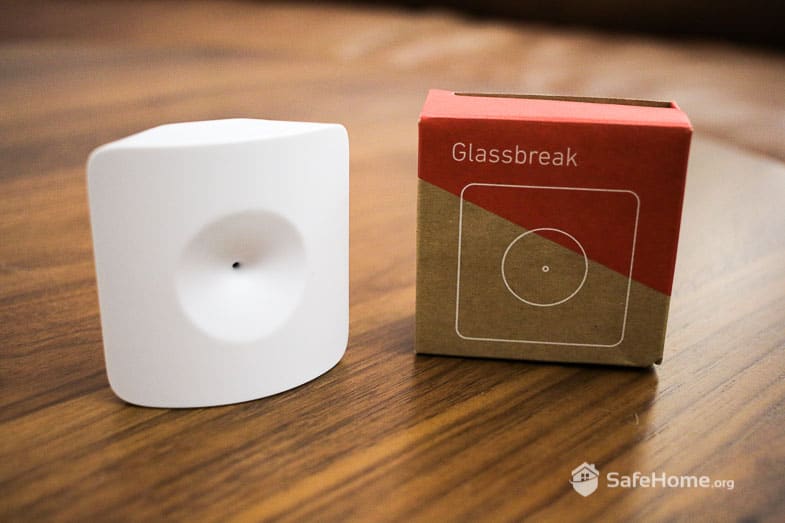
SimpliSafe – Glassbreak Detector
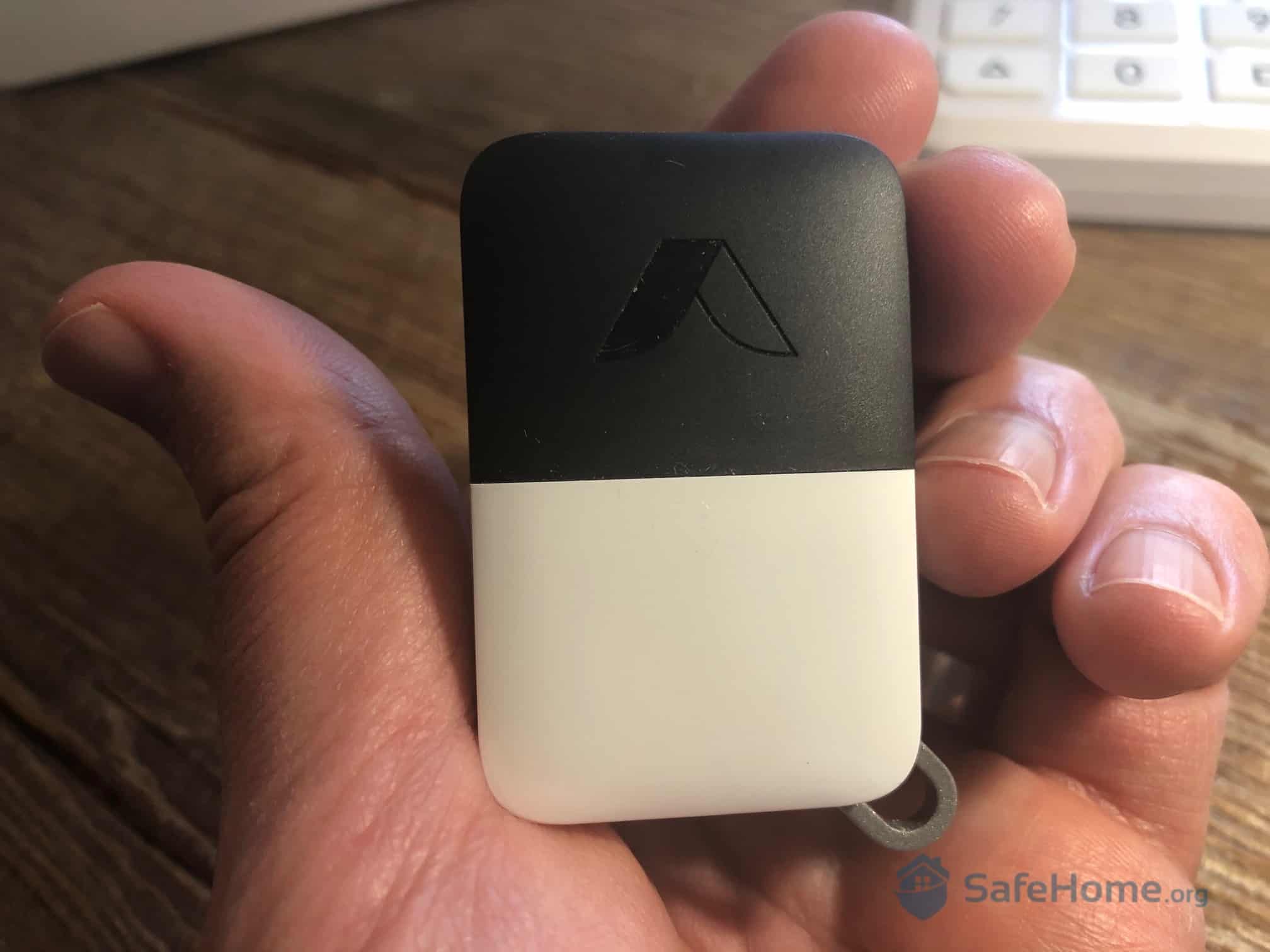
abode Key Fob
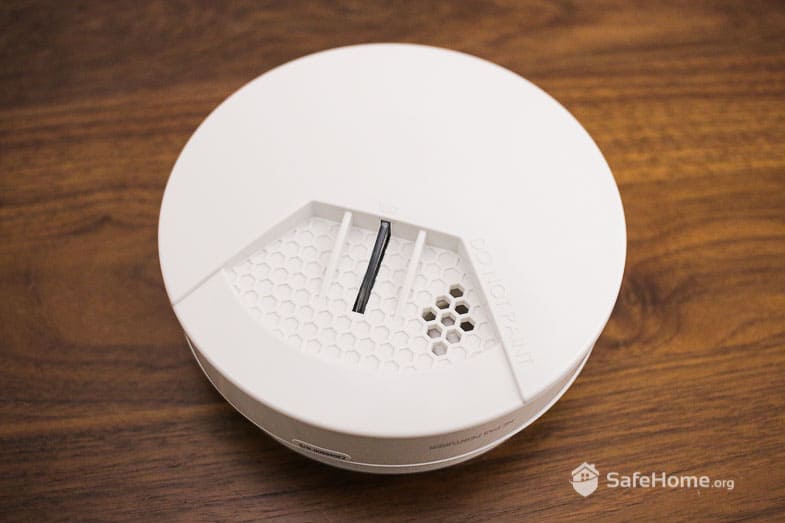
SimpliSafe – Smoke Detector
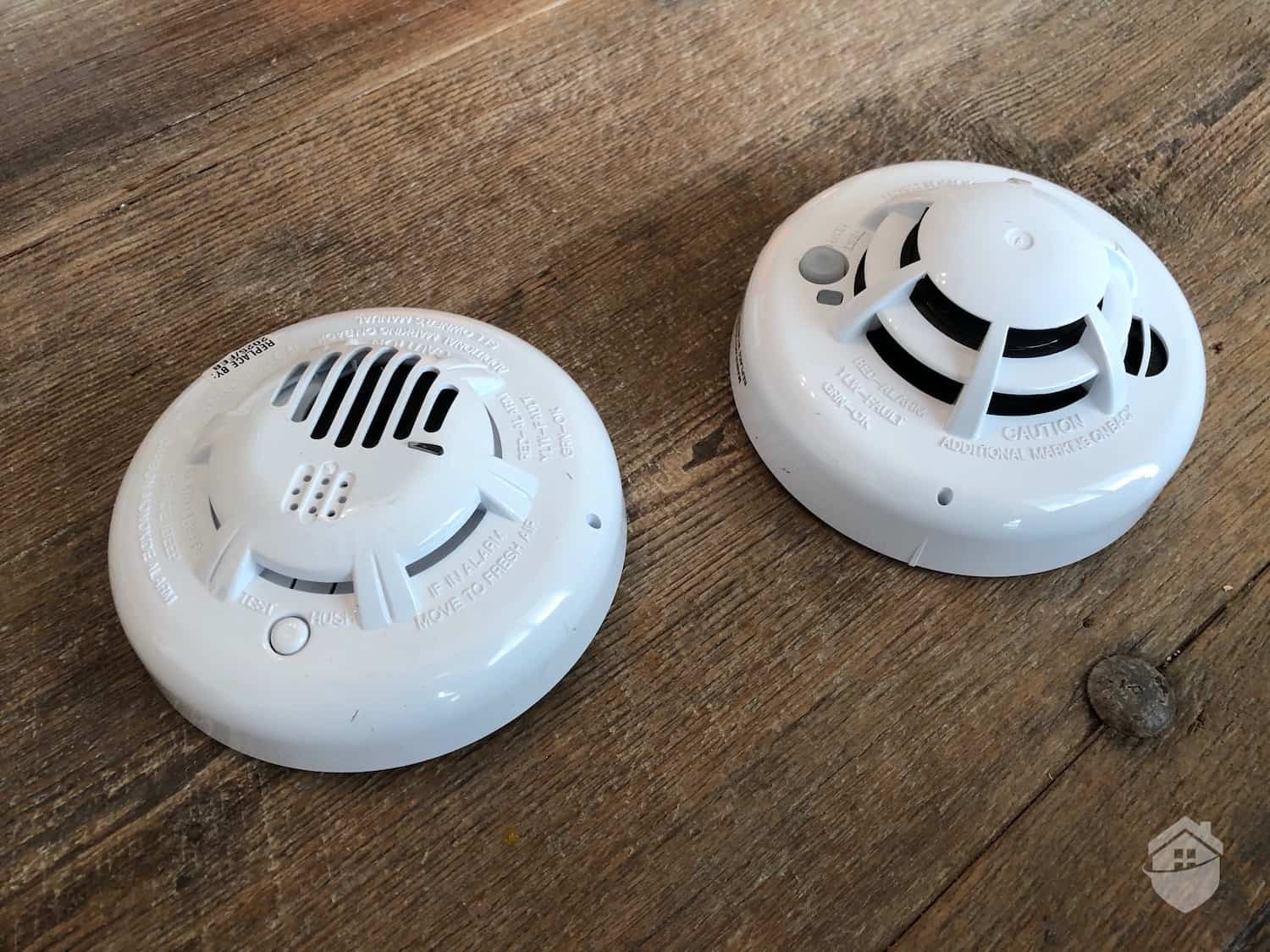
Vivint Smart CO/Smoke Detectors
In other words, a home security system is a network of electronic devices that protect and secure your home or apartment from criminal activity such as burglars, thieves, and home intruders.
Pro Tip: While an increasing number of companies are offering DIY installation, some still require professional installation. Keep in mind, though, having your system professionally installed will likely cost you north of $100.
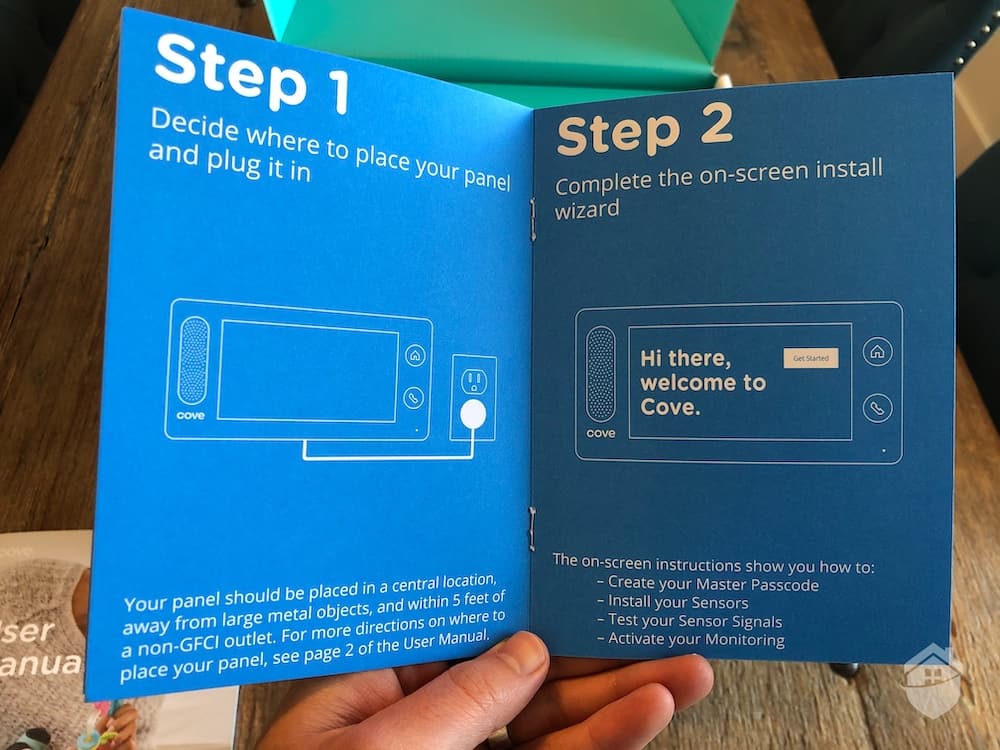
Cove Installation Steps 1-2
The most basic home security systems will primarily use door and window sensors that communicate with a central hub. When the system is active and a door or window opens, the sensor will notify the hub which will send out an alert or sound an alarm. Some systems will even alert the authorities if you have professional monitoring set up. From there, your system can get more complex by adding on sensors, security cameras, and other pieces of equipment, but we’ll get into that more later.
Now, if the security system is set up with professional monitoring, the control panel will immediately notify the monitoring station. Once the monitoring station personnel are notified of the security breach, they will take necessary action, which usually begins with a call to the homeowner. However, in some cases, they can communicate with the homeowner directly through the system’s control panel (if the system has a neat feature called 2-way talk, which we will discuss later).
Thankfully, a lot of the time alarms are false. This can be for any number of reasons — maybe you forgot the alarm was set and opened a window; maybe your dog set off the motion detector — but regardless of the reason, your monitoring staff will still reach out to you. If it is a false alarm, you can let them know what’s going on. If you don’t respond, though, most will then escalate action and alert authorities.
Keep in mind that we’re always testing home security systems to see how they perform. To check out our results on the most responsive security companies, read our guide to the best home security company response times.
Security systems that aren’t linked to professional monitoring centers are referred to as non-monitored or self-monitored systems. As these names suggest, the task of monitoring and responding to alerts falls entirely on the shoulders of the homeowner. They have to be ready for alerts, they have to be willing to check the system and see what’s happening, and, if there is an emergency, they’re the ones who must call in emergency personnel.
There are loads of great do-it-yourself security systems that secure the home in that way, and one feature they all share in common is the ability to notify homeowners remotely, which helps the homeowner to take immediate action.
The majority of self-monitored systems rely on text-based alerts that are sent to your smartphone via push notifications. Depending on how detailed they are, you might get a message saying “hallway motion sensor activated” or “there is a person at your gate.” If you have cameras in place, you might also be able to see what’s going on. Some folks feel this is enough protection, but others might feel more secure if a professional was also alerted.
There’s yet one more way security systems work that’s worth mentioning: simply having one can be an effective deterrent to anyone who might be thinking about breaking in. Video doorbells and outdoor cameras can alert would-be home invaders that you’re keeping a close watch on your property, but truthfully all you need to do this is put your security company’s sign in your yard. Even the idea of a security system scares most burglars. It’s another good reason to display signs and stickers where they’re obvious.
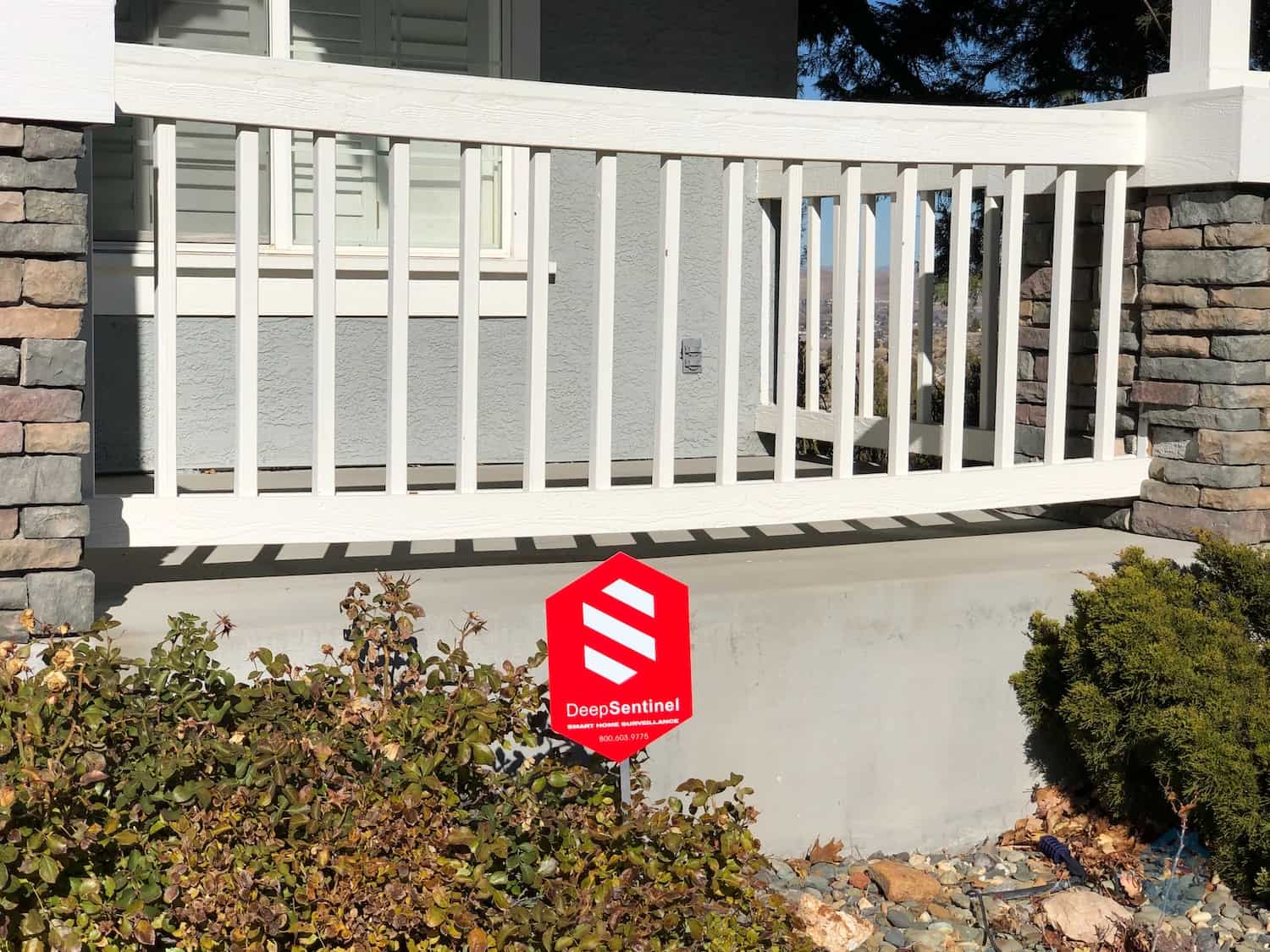
Deep Sentinel Yard Sign in our yard

How does your home measure up when it comes to security? Take this quiz to see how you score, and get recommendation to protect your home.

There are tons of benefits to outfitting your home with a security system. For one, it can cut down the chances you’ll fall victim to a burglary or a home invasion.
While that alone would be enough to convince most people to invest in a security system, here are the top 5 that you should consider:
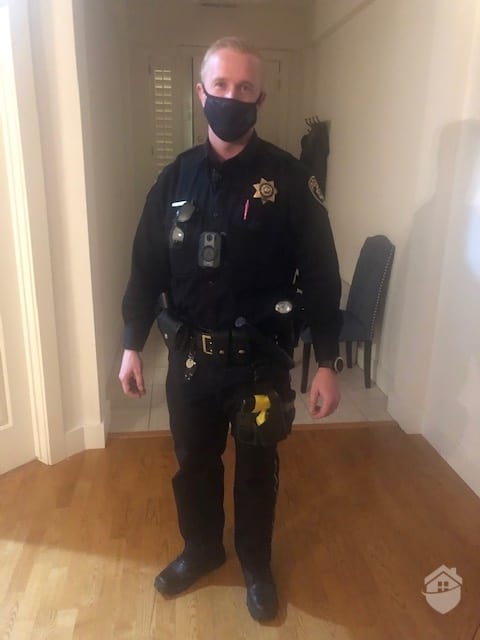
Police Officer Sent to Our House from Cove Monitoring
The long and short of it is this — your home security should be thought of just like any other system in your home. You wouldn’t really go without an HVAC or an electrical system, and your security — we feel — is even more important. Even more so now, given how accessible and affordable these systems are.
But how do you really know if a security system is right for you, and not just another thing to purchase in hopes of easing paranoid delusions? Well, if you find yourself nodding “yes” to any of the following, then a home security system is absolutely right for you.
Most households will find at least some benefits to owning a home security system. Also, it’s worth noting that many systems do not require a long-term contract. So if you’re truly on-the-fence about getting home security, then perhaps try an easy-to-install DIY kit with no monthly fees or contracts. That way, if you find it isn’t right for you, you can rest easy knowing you haven’t invested too much.


There are a ton of home security companies out there — from abode to Xfinity — and they’re all vying for your security dollar. We’ve linked to our opinions of dozens of security companies below, but that’s just scratching the surface. There are hundreds of these companies, and that number is growing all the time. Many are small and only service select areas, while others aren’t worth the time of day.
Here are many of the top companies currently offering security solutions for the home.
Source: https://www.sdmmag.com/2019-SDM-100-Rankings
Note that some of the largest companies, such as ADT and Brinks Home Security, are not ranked because such detailed information was not publicly available or they did not report it to SDM. Companies that reported fewer than 1,000 residential subscribers are not included in this ranking.
Perhaps most interesting about our list above is the diversity of home security companies represented. Each company takes a different approach to home protection. Each company has a particular target demographic, a specific philosophy, value proposition, company culture, etc.
And while no company is a great fit for everyone, every company is a great fit for someone. So it just takes a little homework to find the company and system that’s right for you and your home.
The good news is, you don’t have to do that homework yourself. That’s what we’re here for. We spend all our time–more than a thousand hours a year, in fact—putting security systems through their paces. We find out what it takes to trip a SimpliSafe motion sensor, just how loud a Ring Chime is, and how much you’ll pay to add a camera to your ADT system. Then we condense it all and write it up in clear, easy-to-understand language so all you have to do is read through guides like this one.
We’ll share a cost-comparison chart in just a bit. But first, it’s important to understand the different pricing structures typical of home security systems. The last thing you want is to be taken for a ride and find yourself upside-down in your security system. So here’s what to look out for…
While finding the right home security system to fit your needs should be your main focus, the cost will likely be a major consideration. When assessing costs, it’s important to determine how much you’ll really be paying. Don’t just take the pricing the company advertises at face value.
Here’s why: Many security companies like to offer monitoring services “starting at” a particular price. They may also advertise “as low as.” But more often than not, the “as low as” price is lower than what you’ll end up forking out for your monitoring system. So remember, there’s more to the total cost than the initial, advertised price.
An additional piece of advice: be on the lookout for sales. Many home security companies offer seasonal discounts. For example, at the time of this writing, SimpliSafe was offering a 50 percent discount for any new system.
Pro Tip: Home security systems are great, but to get true peace of mind at home, don’t forget to keep a list of resources handy in case you need immediate help or are concerned about your family’s safety. Check out our in-depth safety and security resource guide for more.
When searching for a security system, typically the only price you’ll see upfront is the monthly fee. However, most security systems also have installation fees, activation fees, and sometimes even equipment fees, as well as taxes and surcharges to add on. Don’t let this scare you away, but do keep it in mind.
 Installation Fee
Installation Fee Equipment Fees
Equipment Fees Monitoring Fees
Monitoring Fees Miscellaneous (ie taxes, surcharges, etc.)
Miscellaneous (ie taxes, surcharges, etc.)You’ll want to compare the upfront costs to the long-term costs of each security system. You might find your $20 a month advertised bargain monitoring contract ending up costing you, say, $45 a month after you add on all the fees and other charges.
Look at the overall costs of the different systems and options, add it up, and compare the costs between the various security companies you’re considering. You might be surprised at what you find. For instance, a company advertising “free installation and activation” may have a high monthly fee, making it more expensive than a system that does charge an installation fee but waives the monthly fee.
There’s one last thing to consider when it comes to pricing. Some home security providers rent out equipment rather than sell it outright. This means your initial cost will be lower, but you’re going to be paying a higher monthly fee, and you can’t take your equipment with you when you go. Some people prefer one over the other, but it’s really a matter of preference and budget.
On the other hand, it could end up costing you more than if you had rented the equipment and paid a higher monthly fee, but with a much lower upfront price. Here’s the point: Look at the overall costs, do the simple math, average out the numbers, and find the best deal. You’ll be glad you did.
Here’s a side-by-side cost comparison of some of the best home security systems:
| Home Security Costs | Frontpoint | Vivint | ADT | SimpliSafe |
|---|---|---|---|---|
| Installation Cost | $0 | Starts at $49.99 | Starts at $0 | $0 |
| Activation Cost | $0 | $0 | Starts at $25 | $0 |
| Equipment Cost | Starts at $99 | Starts at $549.99 | Starts at $194.98 | Starts at $249.96 |
| Monthly Monitoring Price | $49.99 | $39.99 – $49.99 | $24.99 – $64.99 | $0 – $29.99 |
Did you notice the pricing comparison chart (above) lists the four different cost breakdowns? Now notice how none of these companies charges only a monthly monitoring fee. They each have other costs to factor in – from installation and activation costs, to equipment costs. This is typical of most home security companies. So keep it in mind while shopping around to find the best value on home protection.


Now consider your personal living situation. Do you own your home, or are you renting? This matters greatly, as it will influence the type of system you choose and the money you will spend.
When you own a home, you have different factors to consider when choosing a security system. Homeowners typically stay in place for longer than renters, so they often choose a system with longevity in mind. This allows them to spread the costs over a longer period of time. Also, homeowners can make major changes or modifications to their home, so this might influence their decision.
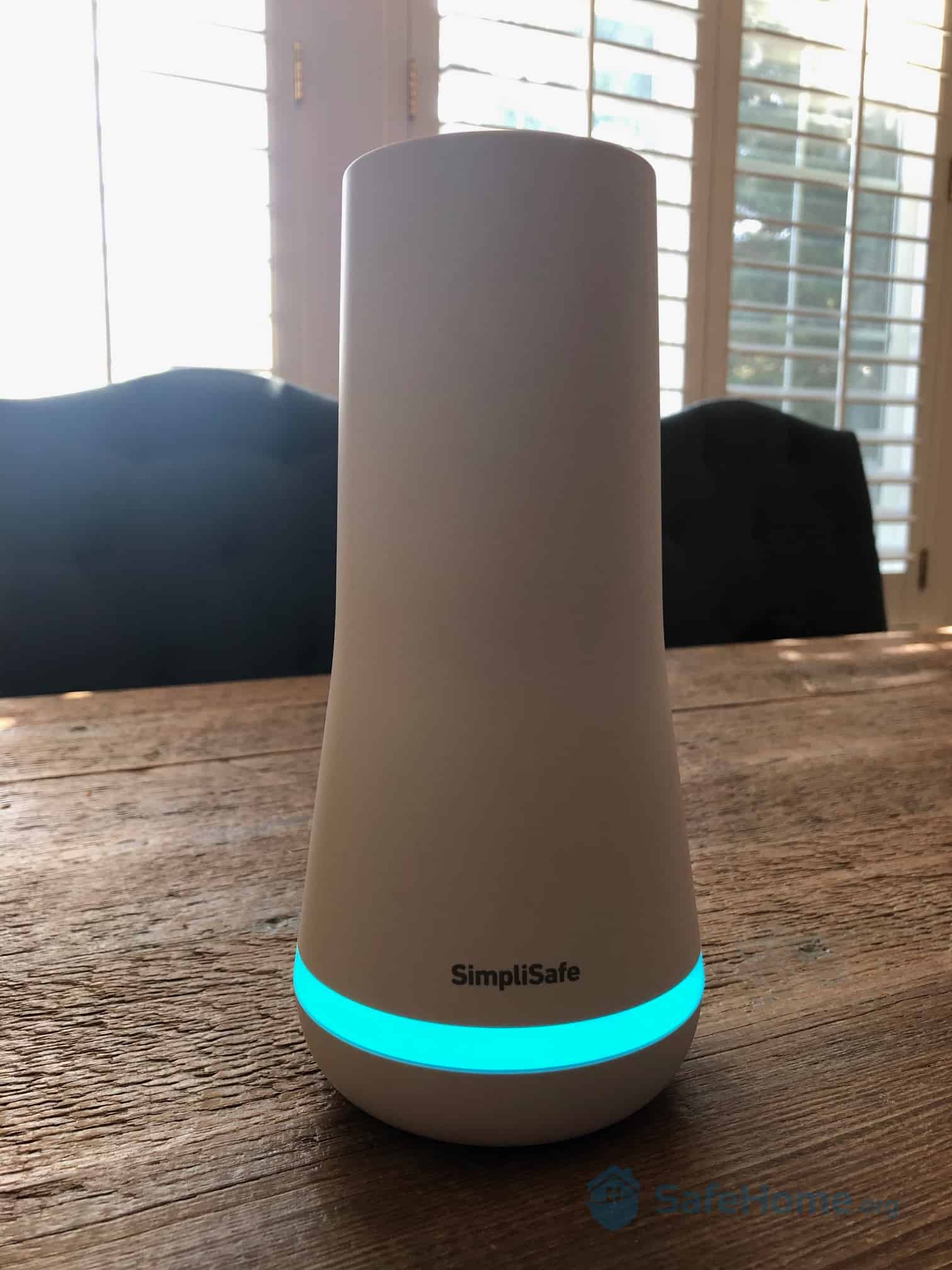
SimpliSafe Base Station Closeup
Renters, on the other hand, may need to seek a landlord’s permission to make changes to the home. They may also be hesitant about spending a lot of money to purchase a system they may not be able to take with them when they move.
Also, there are contracts to consider. A renter must be careful not to lock themselves into a contract they might not be able to get out of. If you rent, consider contract lengths for rental or purchase/rental options that allow you to keep the system and take it with you when you move.
Now, this isn’t to say that home security options for renters are thin pickings. Quite the contrary – more and more companies are offering fantastic security systems for renters at affordable prices.
FYI: Thinking of taking your home on the road? Learn about some easy security options for recreational vehicles in our thorough buyers guide to RV security systems.
If you’re renting, consider how long you plan to stay at your current location. If you’re only staying for a couple of years, then look into a security system with do-it-yourself (DIY) installation and purchased equipment, rather than something that’s leased.
Now we get that this might seem counterintuitive, but the reason is that most security companies that lease out their equipment will require professional installation and a mandatory long-term contract. That’s a pretty big commitment for a renter, and usually a waste of money. If you decide to leave, you still have to pay to cancel the contract. Note though, that some providers will allow you to transfer your system to a new property, but that usually comes with contract renegotiations.
If you purchase a DIY system, it moves with you when you go. It takes minimal effort to take down and set up most DIY systems, and some companies will even send you a care package of fresh adhesives for your sensors and other installation must-haves if you tell them you’re moving.
If you own your home, and are planning to stay awhile, you may want to choose a more permanent solution with a lower upfront cost but longer contractual obligations. If you’re renting (or are a homeowner but plan to move in the near future) consider going with a company that has a higher upfront cost, but that gives you ownership of the equipment. This way, you’ll see lower monthly costs and the benefit of being able to take the equipment with you when you move.
Did You Know? Amazon is pretty generous on doling out home security systems deals and discounts on Prime Day. To find some great savings, head over to our rundown of The Best Amazon Prime Day Deals on Home Security Systems.
Another benefit of owning the security equipment is that you can source extra sensors (and other options) from commercial retailers, rather than having to buy direct from the company. Full service companies typically charge premium fees for their equipment. Looking elsewhere is yet another way to save money.
If you prefer to lease equipment rather than purchase, the upfront cost will definitely be lower, but in reality you’re still paying for that equipment over time, most likely in your monthly service fees. So again, consider the overall cost. Additionally, if you want extra sensors or fancy options or add-ons, the cost of that monthly subscription may rise.
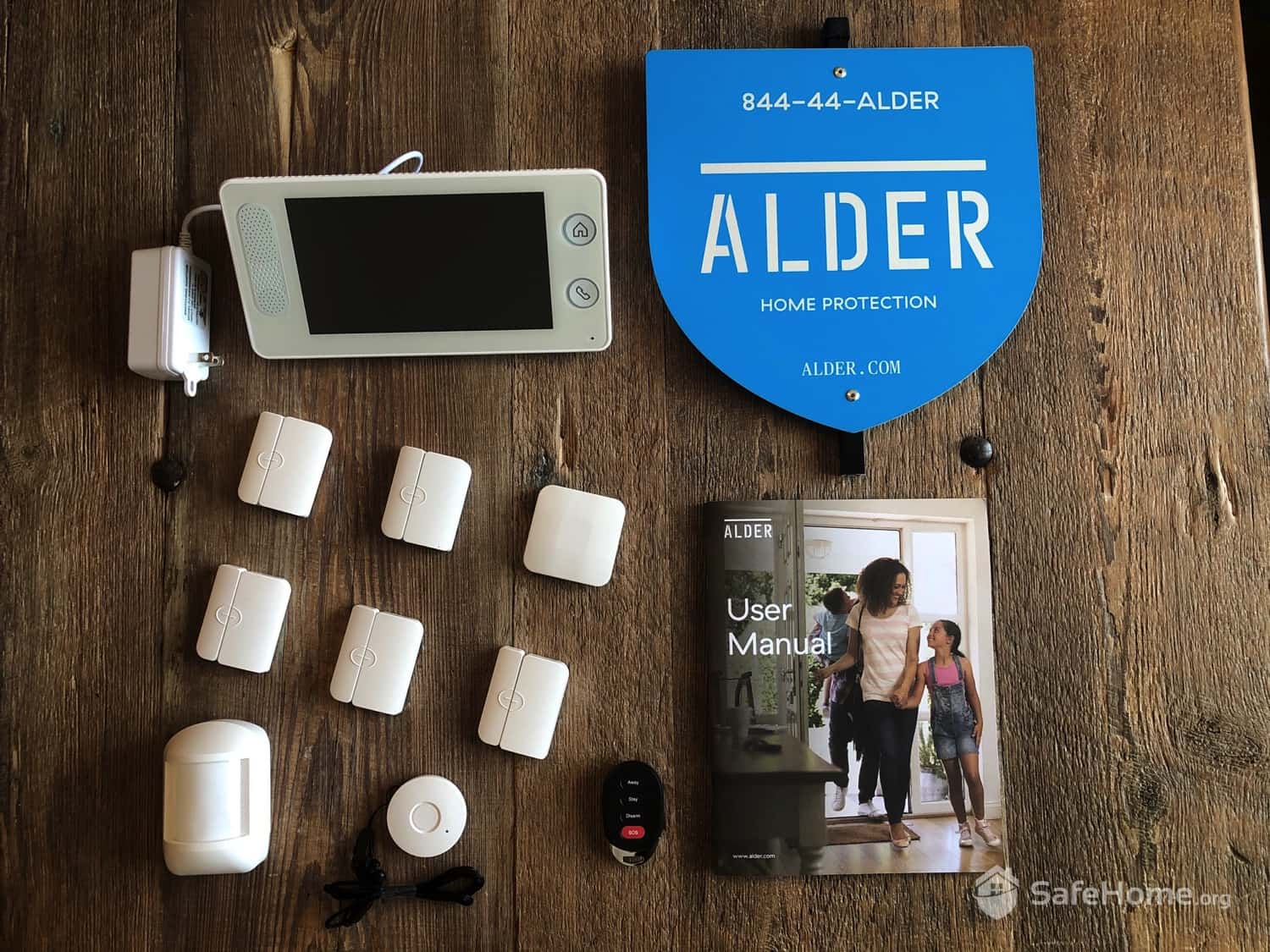
Alder Security Equipment
Or… you may simply be told that you cannot get the options you want. Sometimes the company won’t have what you’re looking for, doesn’t offer it to customers in your area, or has compatibility issues that were not considered. You’ll want to think about the scalability of the system you sign up for, especially if you want to upgrade or make changes to your system down the line.
Here’s another big factor to consider. It’s important that your monitoring system is compatible with your home. Overly sensitive alarms leading to false alarms can cause a nuisance, while on the other hand, you do not want an alarm that doesn’t sound when it should.
Note that some systems are better for certain areas and living conditions. For instance, some systems are well suited for rural areas, while others can be used pretty much anywhere.
With this in mind, there are three connectivity types that will power your system, and these are:
Let’s take a closer look at what these options are all about, and to see which is right for you.
Today, most modern security systems rely on broadband, which means they need a Wi-Fi connection to function properly. Wi-Fi is best for home automation systems. Although the availability of broadband connectivity has dramatically increased in recent years, not every house has this type of connection, especially in rural areas. Or, such areas may have broadband connectivity, but poor or unreliable coverage due to the location. Obviously, this presents a problem, as you need a security system that offers reliable 24-hour service for peace of mind.
If broadband or Wi-Fi is an issue, you may want to consider a security system that utilizes a landline. Landline monitoring is the least expensive option, but it’s not always the most secure. If a criminal wants access to your home, they could easily cut the wires and disable the entire system. While this is always a possibility (and therefore a concern), it’s actually not too common.
Cellular is least susceptible when it comes to tampering, but it also tends to be the most expensive of the connectivity options. If you do go with cellular, you must ensure your area has good cellular coverage. If it doesn’t, you won’t be able to reliably access your security system remotely to check on alerts or to view security camera live-feeds.
You also need good coverage so that your security equipment can communicate with the monitoring station and work with compatible devices and sensors. Think of it in the same way your computer wirelessly connects to your printer and interacts over the same network. If you have a security system with remote sensors and a smartphone app, all of this technology needs to properly interact in order to make your system truly safe and secure.
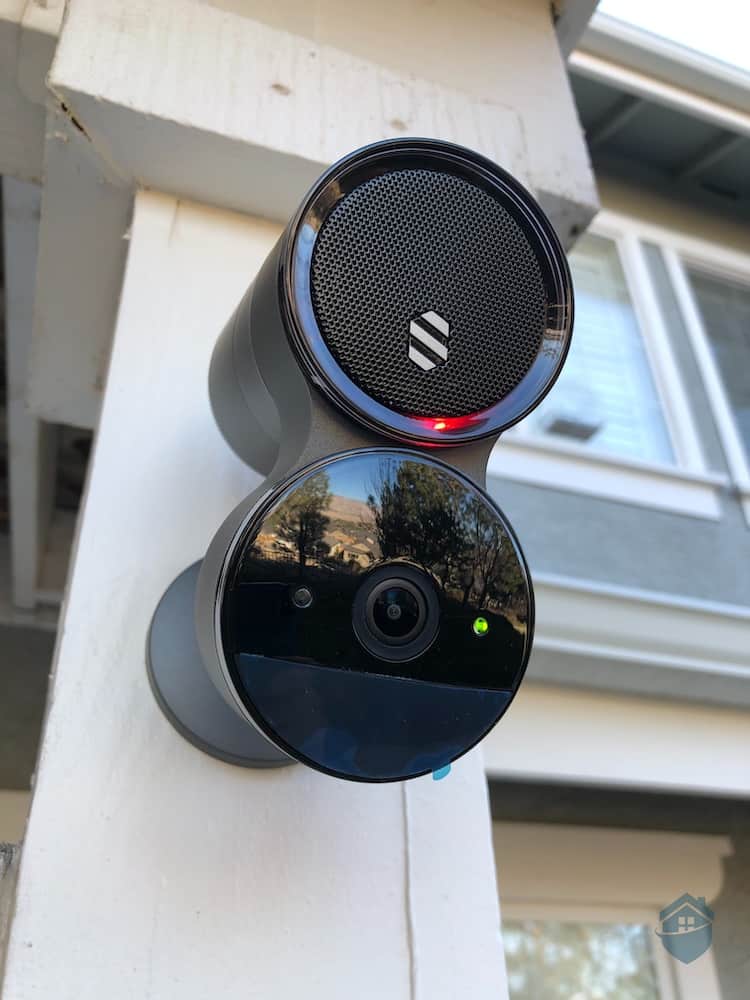
Closeup of Deep Sentinel Camera, mounted Outside
These days homes also differ when it comes to intelligence. More and more of us have begun to partially and fully automate their homes. It’s becoming more affordable every day, it makes for an easier and more convenient life. But let’s be honest: it’s also novel and interesting. Controlling your home with your voice or with the push-of-a-button is an excellent way to relax and still get things done (and show-off to your neighbors).
Just as with other aspects of your home, though, it’s intelligence is something to consider when you’re selecting a home security system.
Many security systems today are compatible with smart home automation devices, like Google Home and Amazon Alexa. Not all of them are, though. So, if you’re looking for a security system that works seamlessly with home automation features – like unlocking your door remotely from your phone, controlling the AC, voice-activated lights, etc. – then be sure the system you choose is compatible with third-party automation platforms.
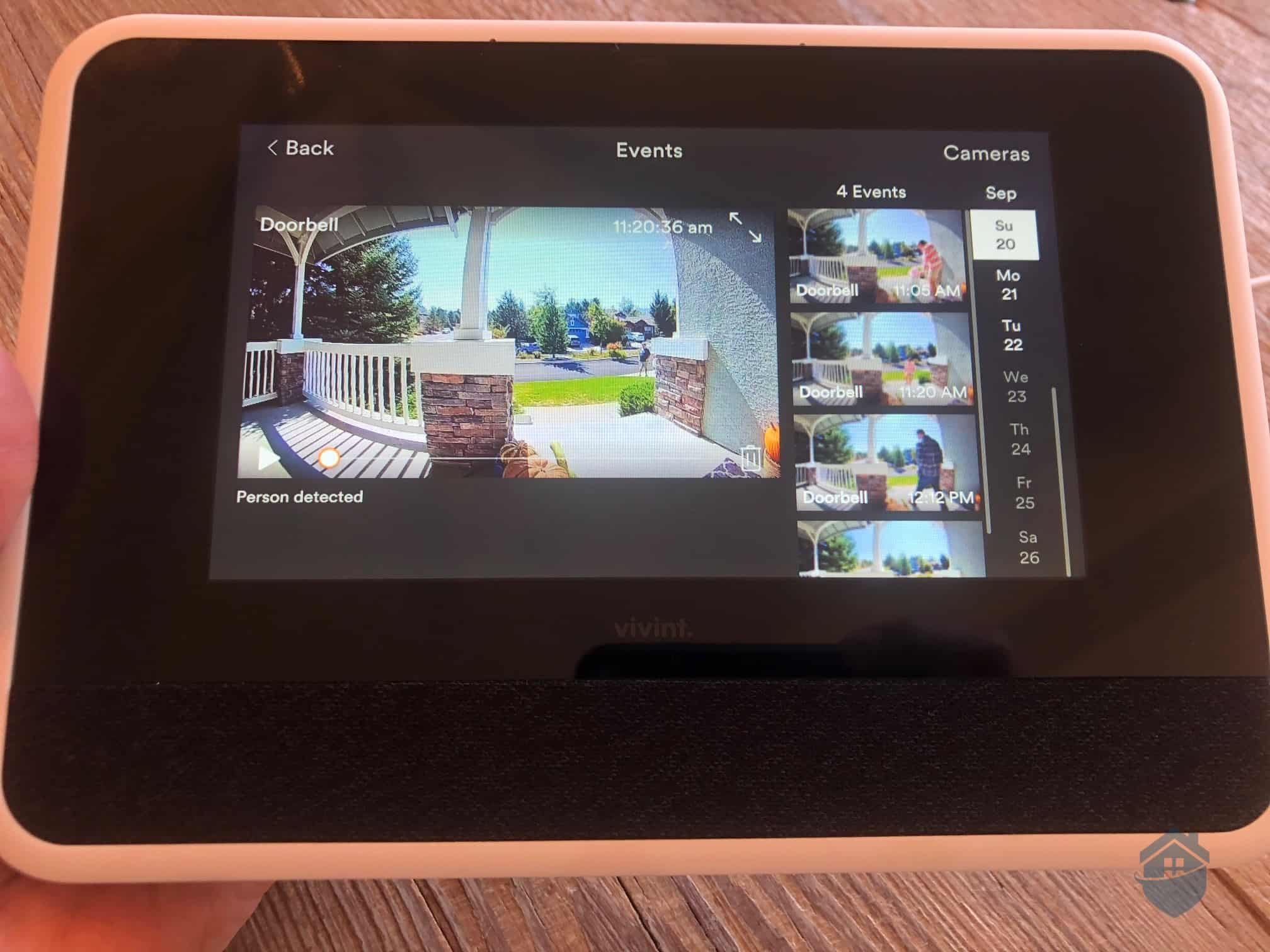
Person Detection on the Vivint Smart Hub
You’ll find that some equipment is compatible with almost everything, while other equipment is only compatible with specific systems or devices from the same company/brand. For instance, you may find it hard to search for a security system that works with smart thermostats from Google Nest, even though they’re some of the most popular smart thermostats today. That’s because the Nest Thermostat doesn’t support Z-Wave, which is what most security systems use today for inter-brand communication.
Additionally, getting each and every device to communicate properly, and to maintain this functionality, can be frustrating and difficult. However, the more compatible a security system is with other smart technology in the home, the fewer problems you’ll have with the system and its components.
So be sure to look into the platforms that your system works with.
For many, the features of a home security system are incredibly important and top the list of things to consider when it comes time to buy. However, you need to strike a balance between the features you want and how much the system costs. Also, you wouldn’t want to pay for features you don’t need and won’t use, which can happen when you purchase standard home security bundles.
Don’t fall into this trap. Instead, save money by choosing a system that meets your needs perfectly, and only pay for what you are going to use. For instance, why pay for a security bundle with ten window sensors when you only have six windows? That’s money down the drain.
So write down exactly what you want monitored in your home or apartment, and then make sure the system that you’re considering checks all of the boxes (equipment, devices, add-ons, etc.) to meet your needs.
However, it’s generally better to have too many features than it is to have too few features, so be sure to do your homework. Also, it’s important to note that almost all major security companies will customize a system that works specifically for your home and budget.
Here’s a comparison of some of the most common features available from a few of the top rated security companies:
| Home Security Features | Frontpoint | Vivint | ADT | SimpliSafe |
|---|---|---|---|---|
| Installation Type | DIY | Professional | Professional | DIY |
| No-Contract Option | No | No | No | Yes |
| Home Automation | Yes | Yes | Yes | No |
| Mobile App | Yes | Yes | Yes | Yes |
| Customer Support Score | 5-stars | 3.5-stars | 3-stars | 4-stars |
Now, here are the most common options and features to look for when shopping for a security system:
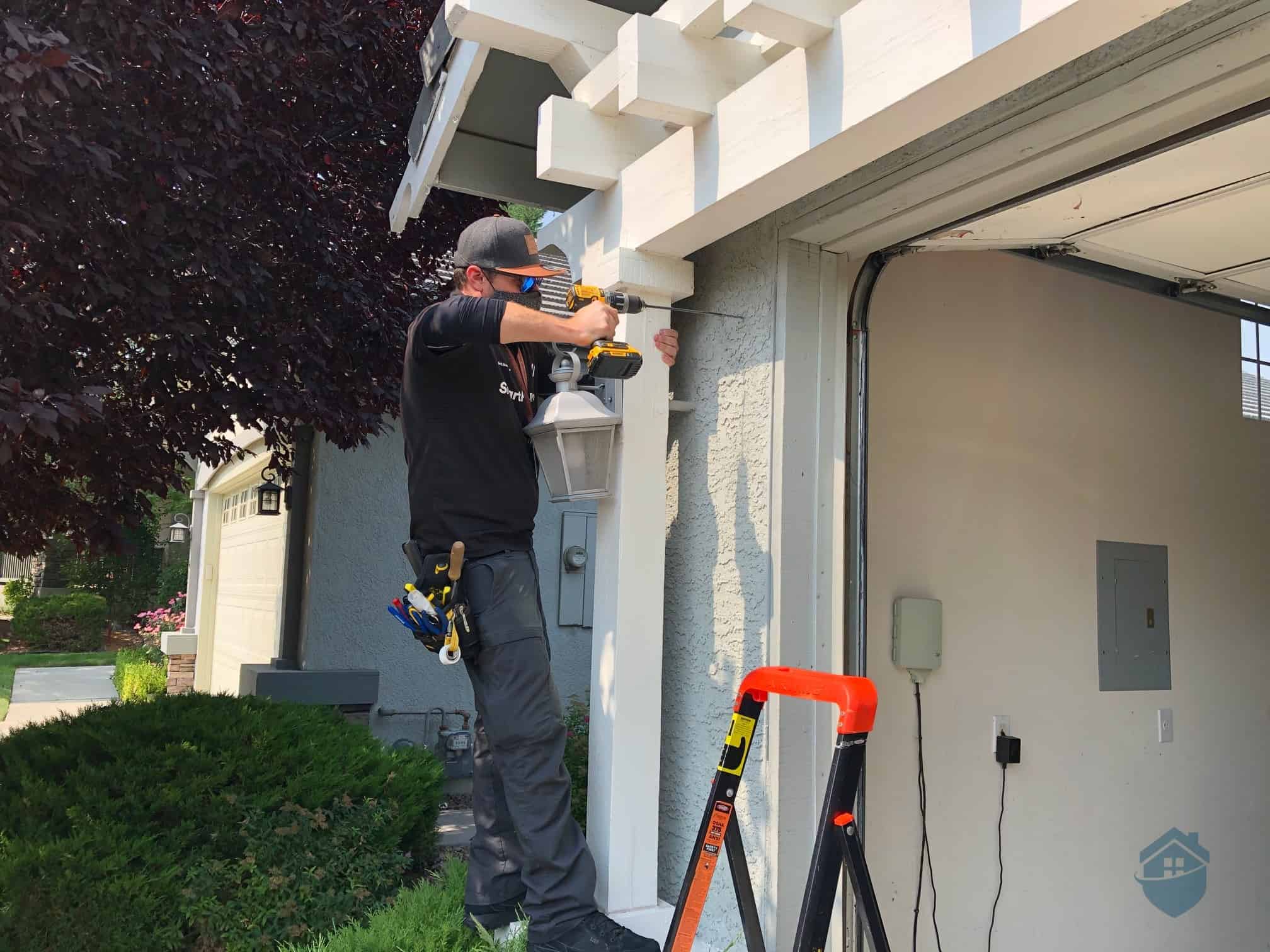
Installing Vivint Outdoor Camera Pro
Installing home security systems can be overwhelming, so for some people it’s best left to the professionals. However, if you count yourself among the DIY crowd, there are many systems that can be easily installed by homeowners and renters; this can also save you a lot of money. With that said, there are benefits and drawbacks of both installation methods. So let’s have a closer look.
Professional installation ensures that everything is up and running properly. And the installation professional can give you a walkthrough of the system so that you can familiarize yourself with the different features and how to use them. This option is best for those who will be living in their current home for a long time. However, if you think you’re going to move relatively soon, then a system with DIY installation may be the best choice for you. It will certainly save you money.
So ask yourself an important question: “What type of person am I?” Professional installations are best for busy adults, non-tech-savvy people, and those who aren’t good with tools (although many DIY systems only require a single screwdriver for setup). The elderly may also benefit from getting professional installation, rather than over-burdening themselves with a DIY option.
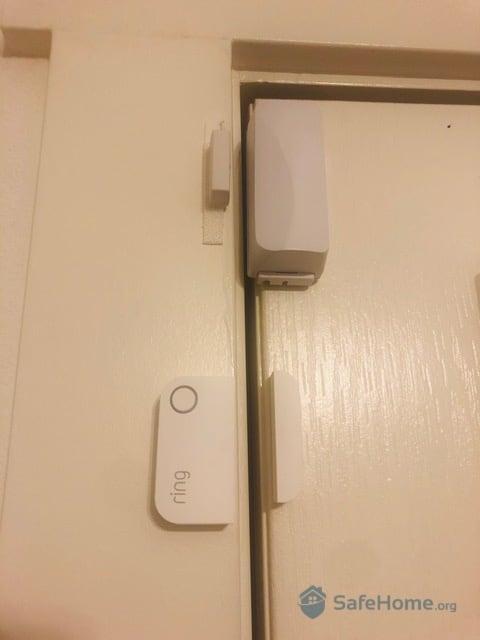
Frontpoint Door Sensor vs Ring Sensor
But if you have the time and the skills, DIY installation is a smart choice. Many companies that offer DIY installation have comprehensive manuals – and even video tutorials – on how to set everything up. Also, companies now provide easy-to-use apps that will guide you through the connectivity between devices and the control panel.
One of the main issues with a DIY system is that if problems arise during the setup, it’s going to be between you and the customer service team to figure them out. What seemed like a quick setup could turn into hours of troubleshooting and headaches trying to describe what’s going on to folks who aren’t there looking at it. These problems aren’t the norm, but if you don’t have the troubleshooting skills — or time, or patience — it’s something to consider.
Finally, it’s also worth noting that wireless systems usually do not need professional installation. Such systems are virtually plug-and-play, with no wires to run through walls, and user-friendly connectivity processes. These wireless systems allow for easy-install with basic tools and minimal skills.
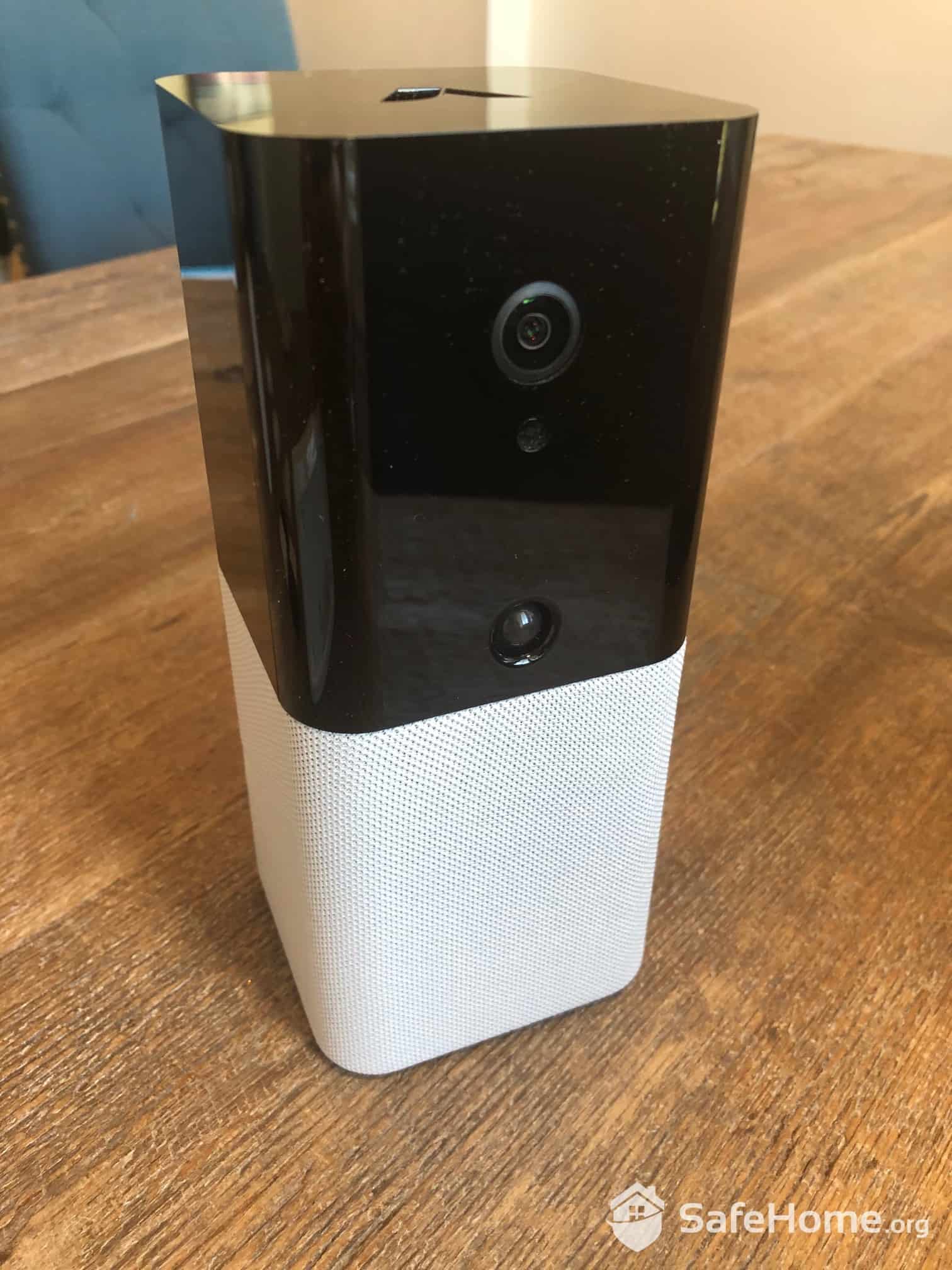
abode Gateway
Let’s look at some of the pros and cons of both types of installations:
The Pros
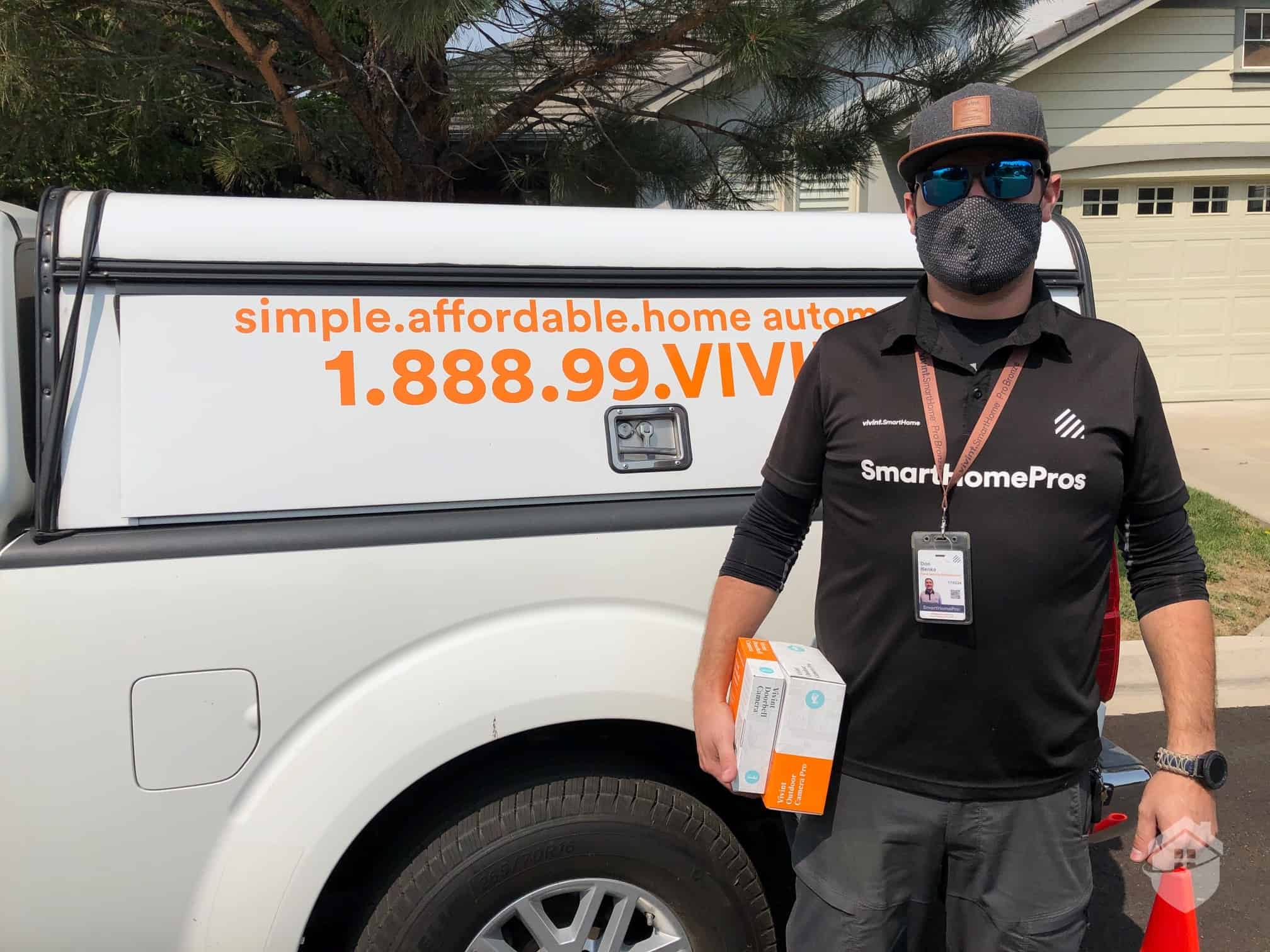
Don, our Smart Home Professional from Vivint
The Cons
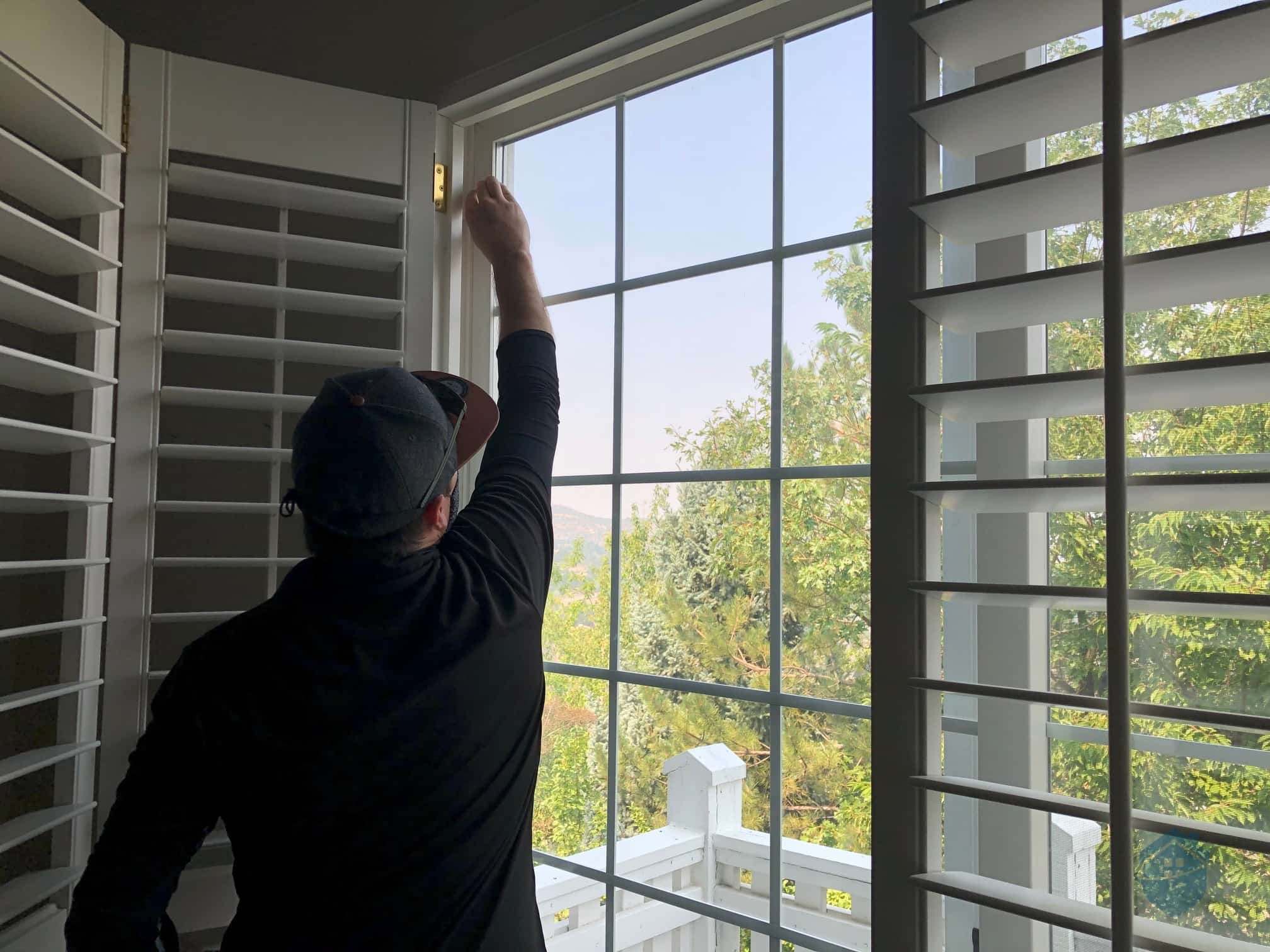
Don, our Vivint technician, installing the Vivint Window Sensor
The Pros
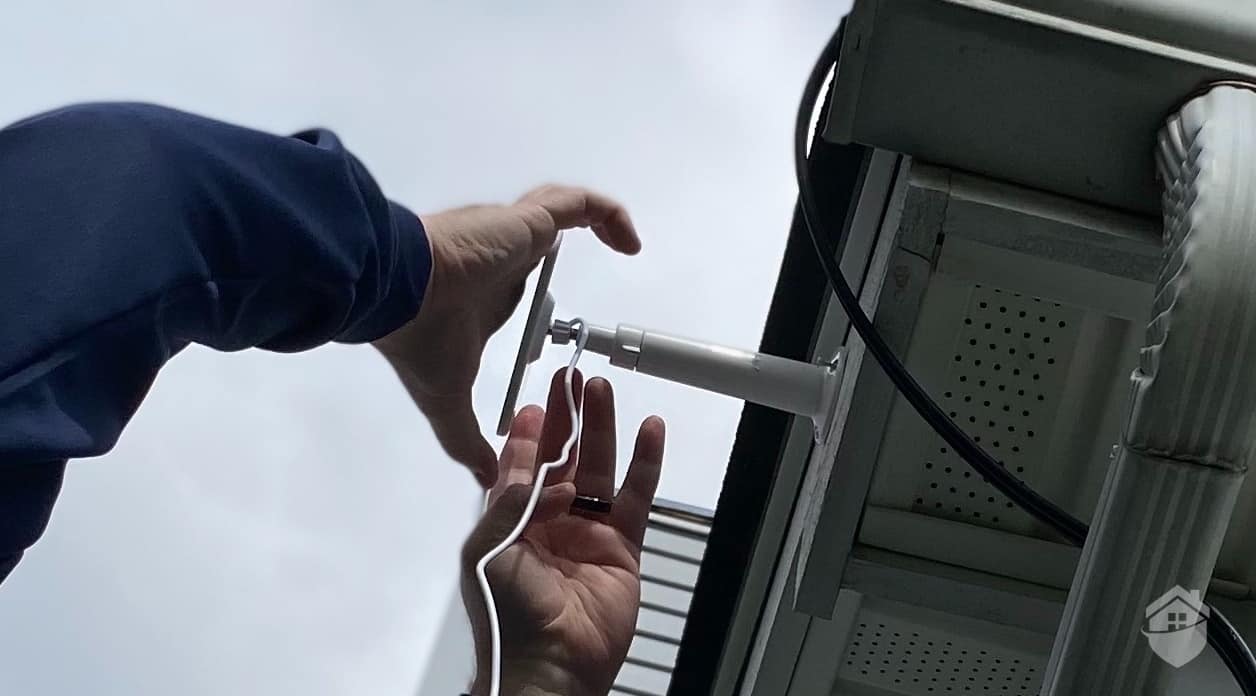
Installing the Reolink Argus 3
The Cons
By now you should know what to look for when it comes to features, technology, and the specifics of a security system. But what about the companies behind these systems? What do you look for to ensure the company is worth buying into? And how do you compare the security system companies to one another?
Here are a handful of important things to consider when choosing a home security company. While there might be other considerations, these are the main factors that can (and will!) impact your service:
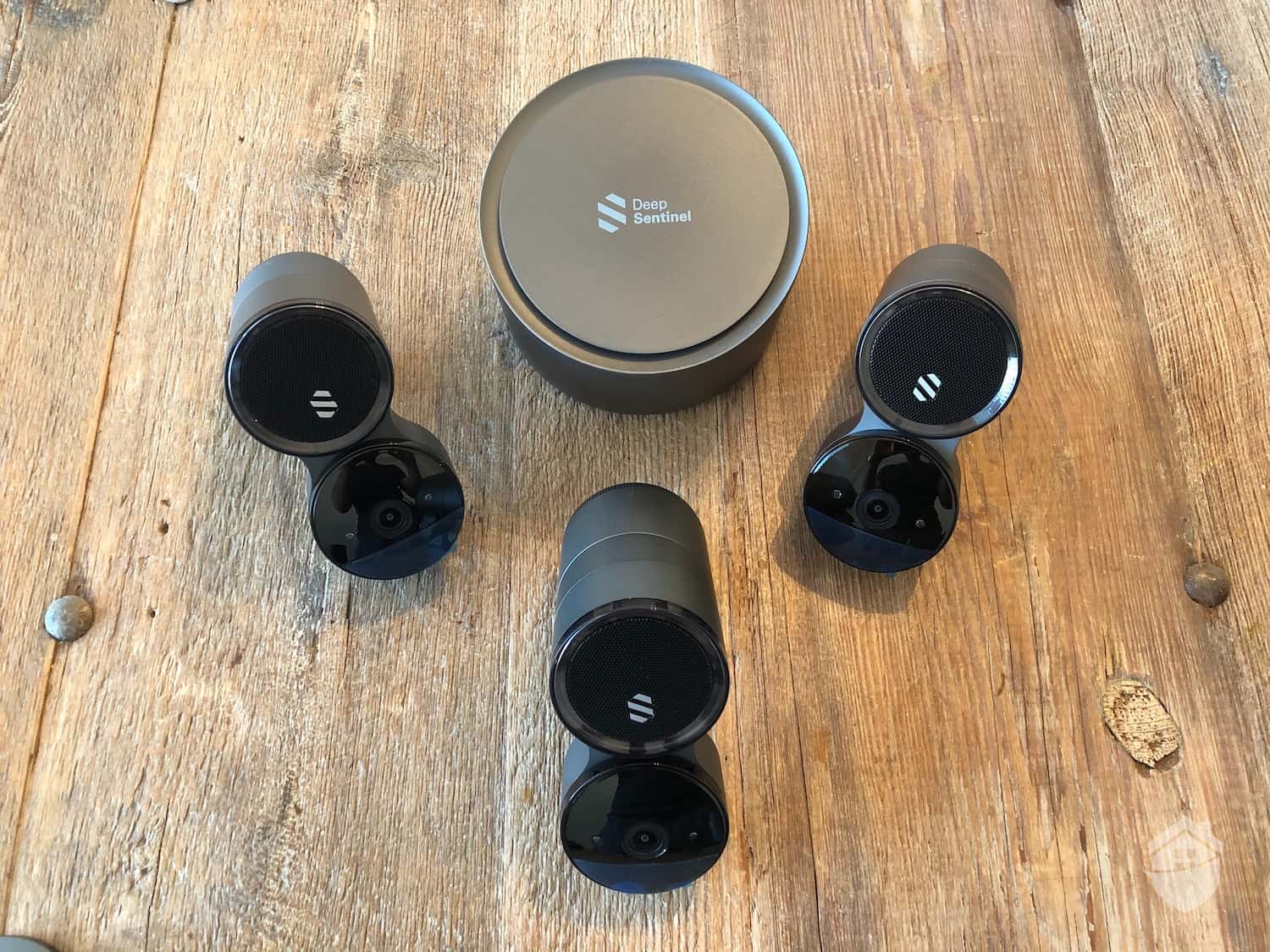
Deep Sentinel Equipment
It’s the digital age, so security system company reviews are easy enough to find. They can also be extremely helpful in narrowing down your choices and digging deeper into a particular system. In fact, you can learn pretty much everything about a security company and their offerings by reading an in-depth review.
A really solid review will share the pros and cons, the ups and downs, and pretty much everything you should know before you pull out your wallet. It’s entirely possible (and encouraged) to fully understand each system you have your eye on – the features and tech, the contracts, warranties, everything.
But unfortunately, not all home security company reviews are created equal. There are lots of websites that are just trying to push products, making their reviews completely unbiased and downright misleading.
So here’s what you want to look for in a review:
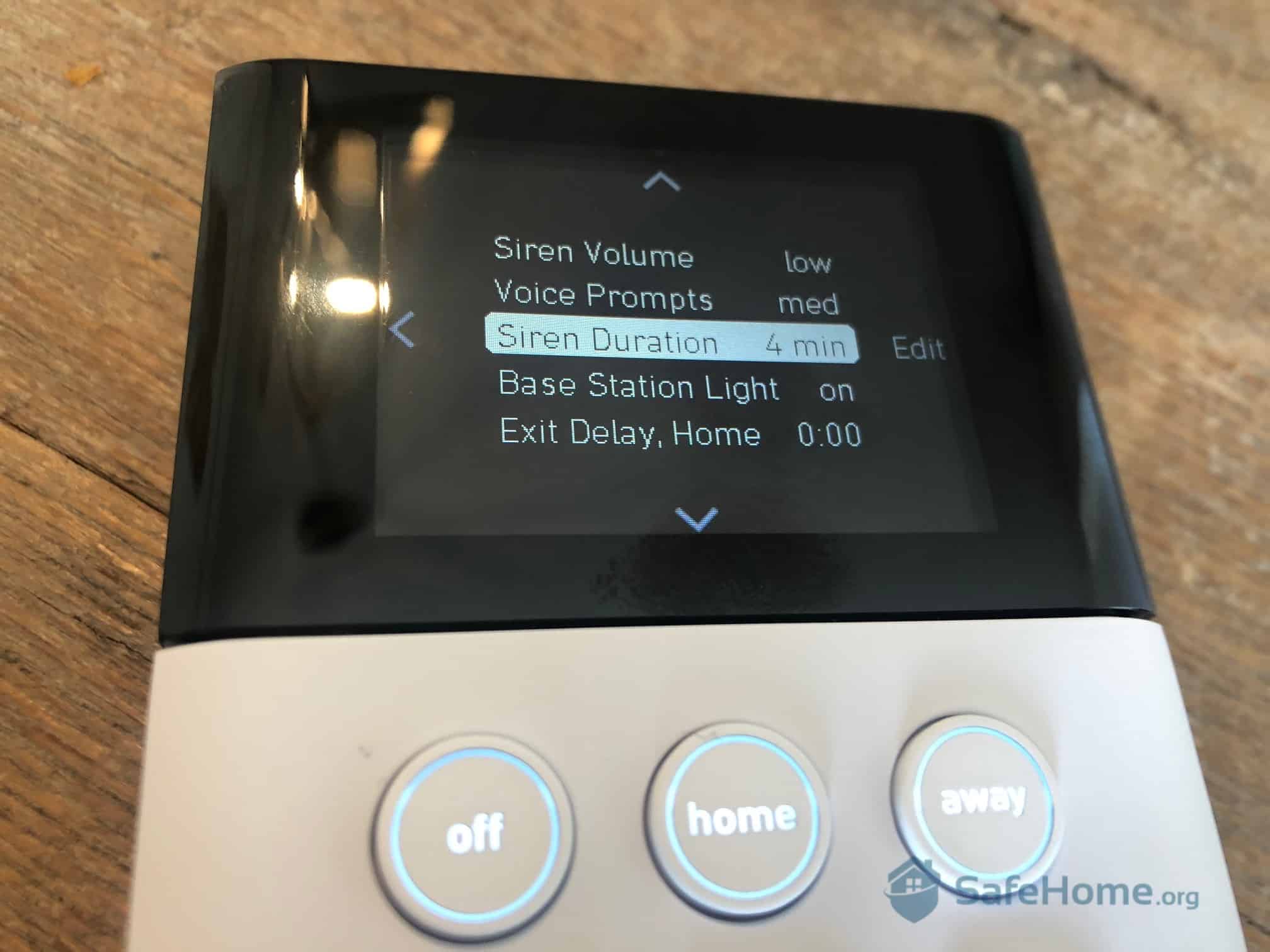
SimpliSafe Wireless Keypad Menu Options
Choosing a home security system can seem intimidating at first, especially when you’re trying to decide which one best fits your lifestyle and living arrangement. But the more understanding you have of the different options, the better off you’ll be when it comes to finding the one that makes sense for you. Hopefully, this guide has helped you to get a better grasp on the options and what to look for so that you can make the right choice.
The good news is that there are plenty of options. From features and technology, to the different installation methods, monitored vs. self-monitored, warranties, guarantees, customer service, and more. No two companies are exactly alike, and each one has something new and unique to bring to the table. This means that you’re sure to find a system that suits your needs — and your budget!

The Zebra. (2023, January 31). Burglary Statistics.
https://www.thezebra.com/resources/research/burglary-statistics/